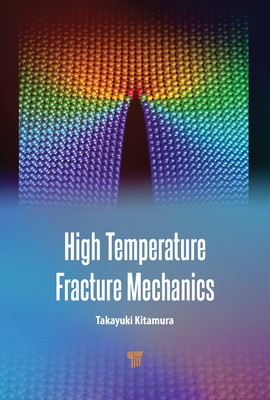
- We will send in 10–14 business days.
- Author: Takayuki Kitamura
- Publisher: Jenny Stanford Publishing
- ISBN-10: 9815129554
- ISBN-13: 9789815129557
- Format: 15.2 x 22.9 x 1.1 cm, kieti viršeliai
- Language: English
- SAVE -10% with code: EXTRA
Reviews
Description
Understanding the strength of materials at high temperatures is critical to ensure the high reliability of various industrial equipment used in power generation, chemical plants, electronic chips, and so on. This knowledge is particularly crucial because the development of new, environmentally friendly equipment progresses alongside traditional systems. Furthermore, effective thermal management and robust component strength are increasingly pivotal in nanodevices.
This book systematically explains the mechanics of fracture phenomena, focusing on cracking under high temperature conditions. One of the defining characteristics of high temperature fracture is creep, a phenomenon where deformation progresses over time, eventually leading to failure. Additionally, the nonlinear nature further complicates the mechanics of such fracture. This book clarifies the fundamental principles of time-dependent nonlinear fracture mechanics associated with creep. Fatigue failure due to repeated stress or strain can occur at high temperatures, akin to its manifestation at room temperature. The core challenge in high temperature strength lies in the interaction between time- and cycle-dependent failures, known as creep‒fatigue interaction. This book represents the first specialized effort to comprehensively expound on this topic, drawing upon extensive systematic experimental and analytical investigations. It also explains the intricate characteristics of microstructurally small cracks and their complex mechanical properties, demonstrating the effectiveness of statistical simulation analysis as well as systematically outlining future research directions.
EXTRA 10 % discount with code: EXTRA
The promotion ends in 21d.13:59:29
The discount code is valid when purchasing from 10 €. Discounts do not stack.
- Author: Takayuki Kitamura
- Publisher: Jenny Stanford Publishing
- ISBN-10: 9815129554
- ISBN-13: 9789815129557
- Format: 15.2 x 22.9 x 1.1 cm, kieti viršeliai
- Language: English English
Understanding the strength of materials at high temperatures is critical to ensure the high reliability of various industrial equipment used in power generation, chemical plants, electronic chips, and so on. This knowledge is particularly crucial because the development of new, environmentally friendly equipment progresses alongside traditional systems. Furthermore, effective thermal management and robust component strength are increasingly pivotal in nanodevices.
This book systematically explains the mechanics of fracture phenomena, focusing on cracking under high temperature conditions. One of the defining characteristics of high temperature fracture is creep, a phenomenon where deformation progresses over time, eventually leading to failure. Additionally, the nonlinear nature further complicates the mechanics of such fracture. This book clarifies the fundamental principles of time-dependent nonlinear fracture mechanics associated with creep. Fatigue failure due to repeated stress or strain can occur at high temperatures, akin to its manifestation at room temperature. The core challenge in high temperature strength lies in the interaction between time- and cycle-dependent failures, known as creep‒fatigue interaction. This book represents the first specialized effort to comprehensively expound on this topic, drawing upon extensive systematic experimental and analytical investigations. It also explains the intricate characteristics of microstructurally small cracks and their complex mechanical properties, demonstrating the effectiveness of statistical simulation analysis as well as systematically outlining future research directions.


Reviews